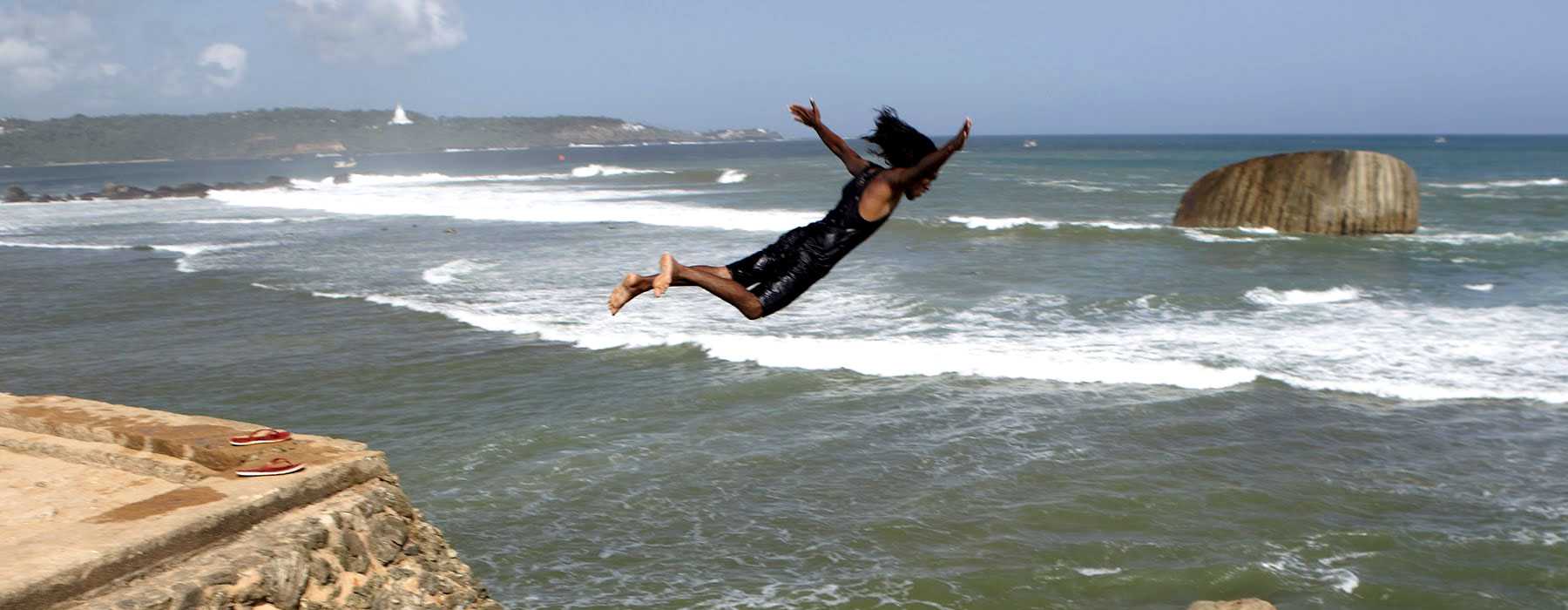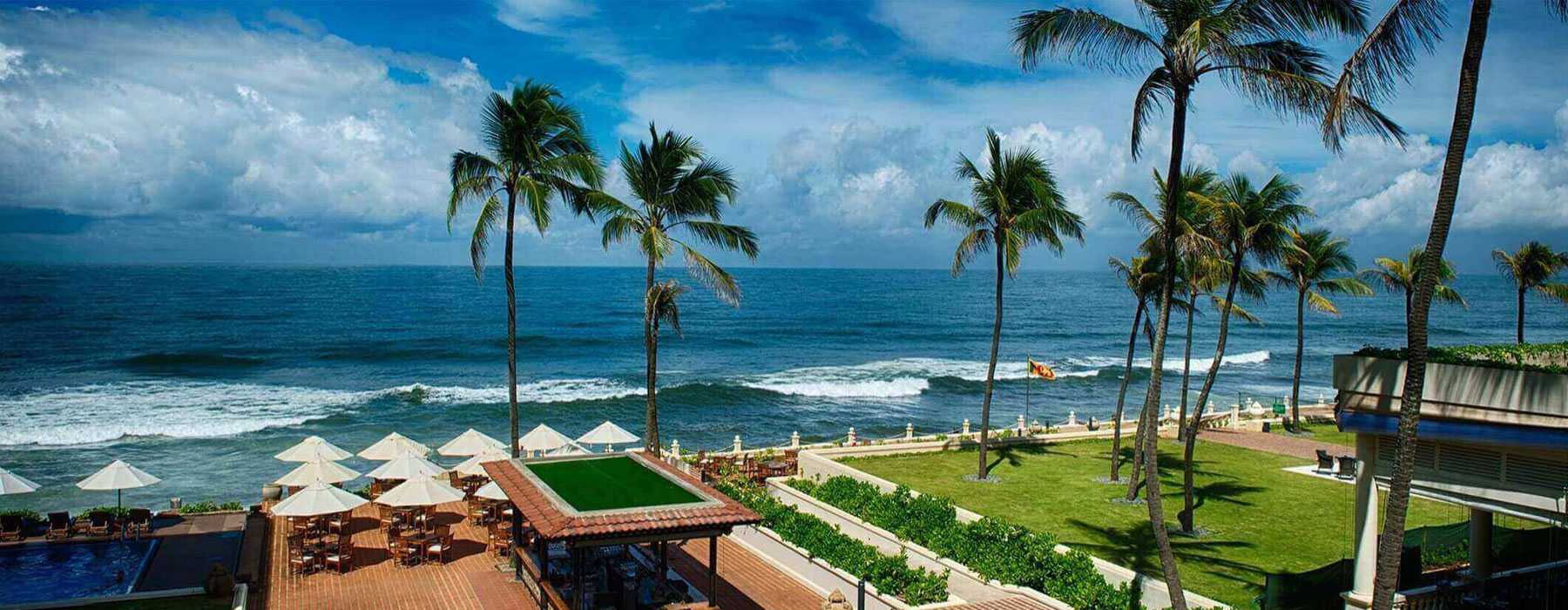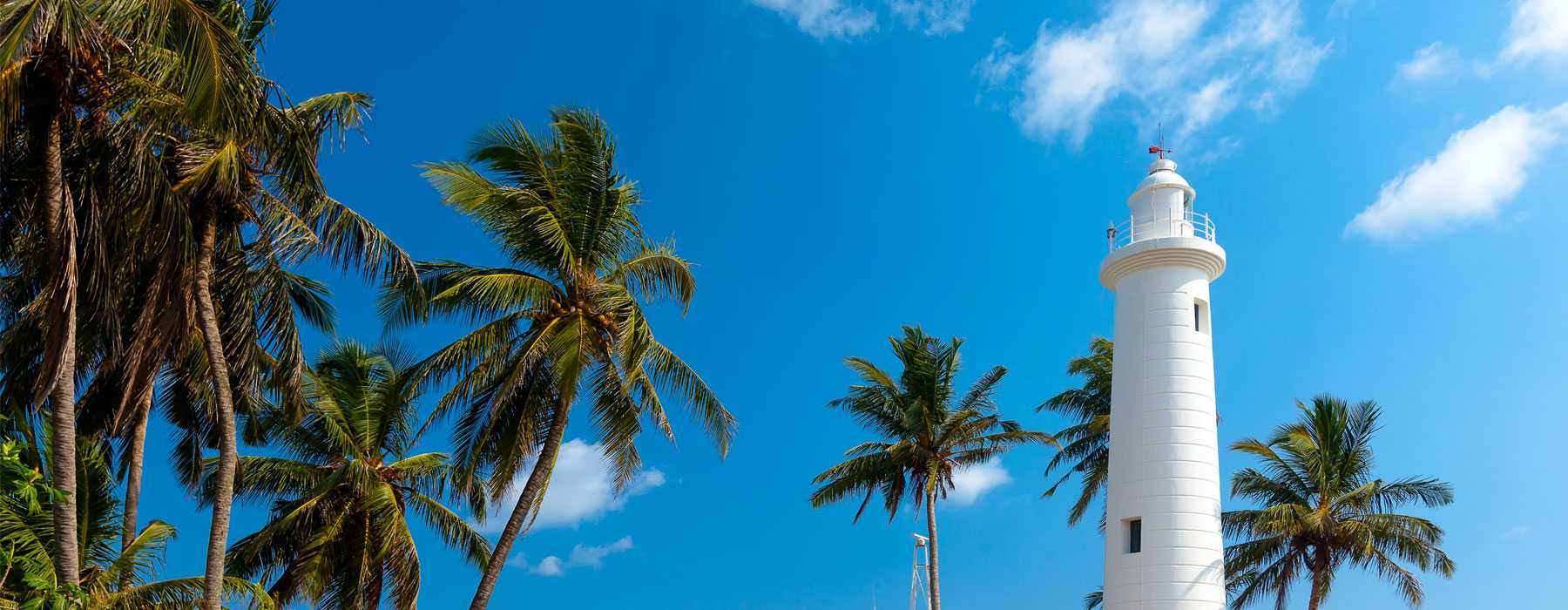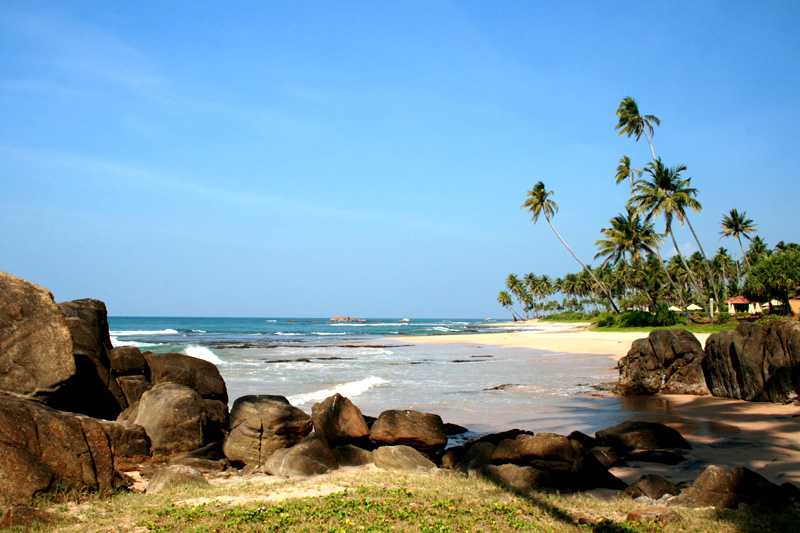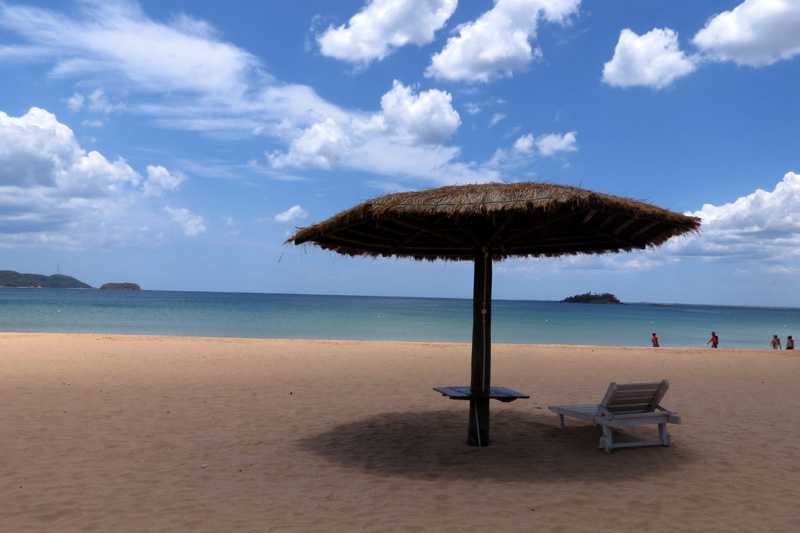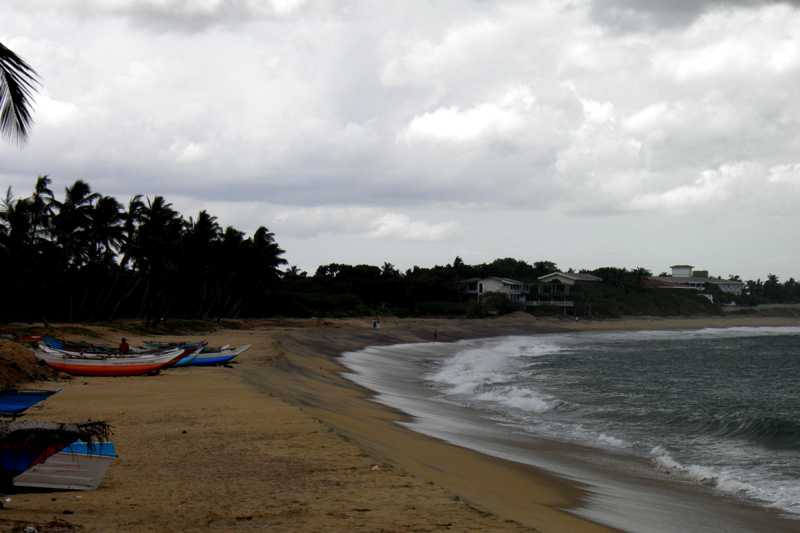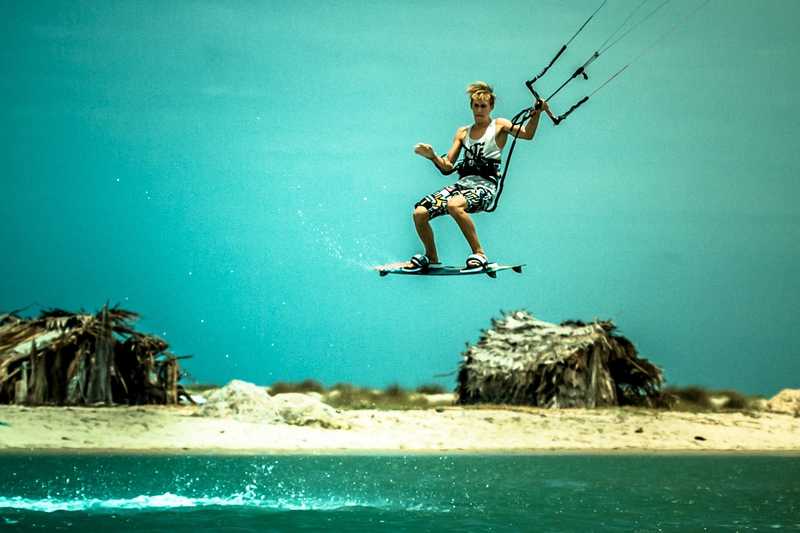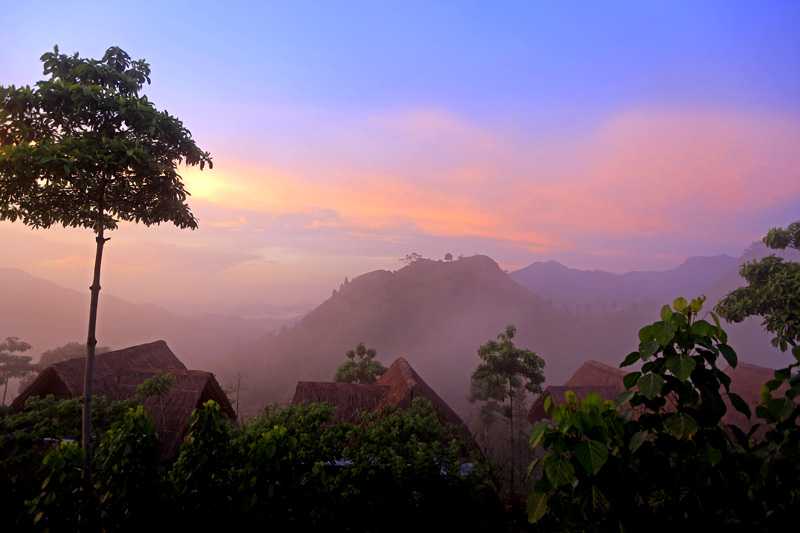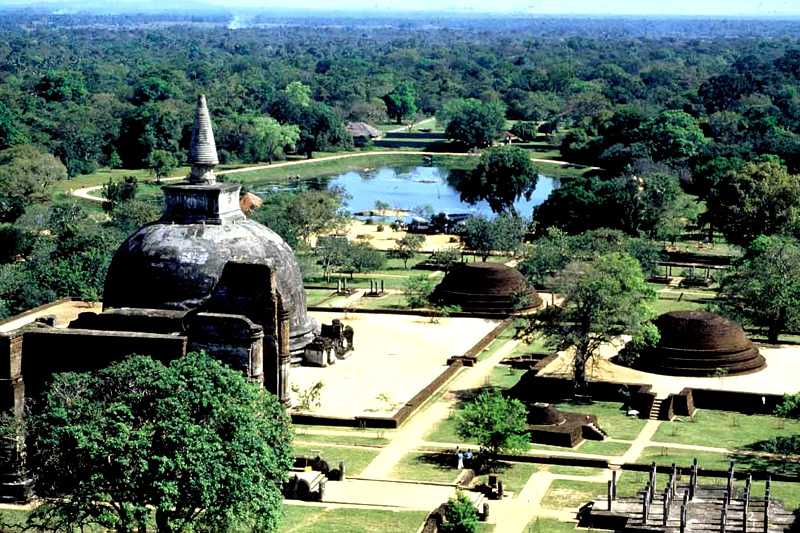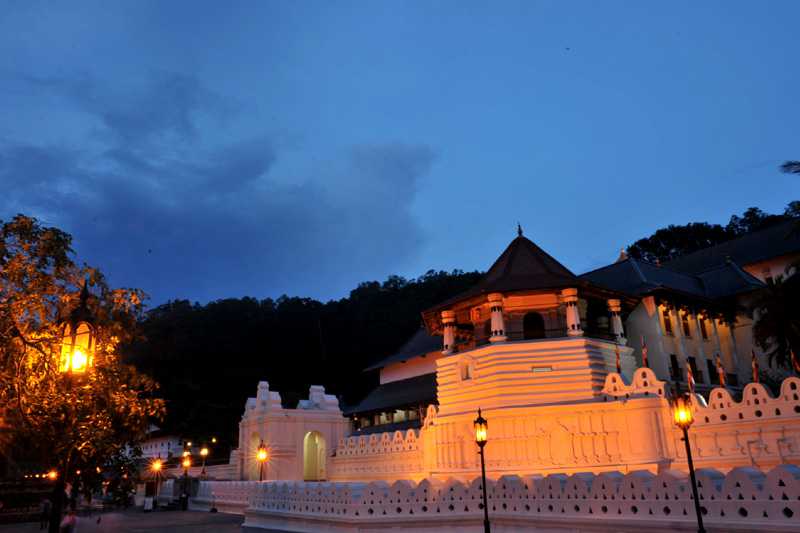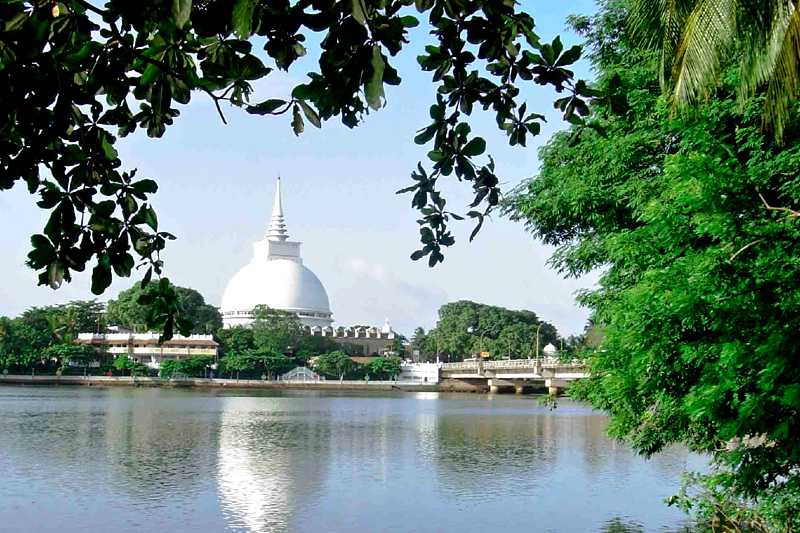Galle City
Blessed with a variety of attractions such as pristine beaches, breathtaking coral reefs, virgin rainforests, the colossal fortress, Galle is a captivating tourist destination in Sri Lanka, situated on the southwestern tip of the island, 119 km south of Colombo. The administrative capital of Southern Province and the district capital of Galle District, Galle is the fourth largest city in Sri Lanka after the capital Colombo, Kandy and Jaffna. Hikkaduwa and Unawatuna are the nearby most popular tourist attractions.
At a glance
-Area : 16.52 km2
-Population : Approx 100,000
-Distance : 100 km south of Colombo (1-hr drive on Highway)
-Province : Southern Province
-Climate : Hot and humid over the year reaching max temperature up to 31oC and rainy from May to September.
Getting to Galle
Galle can be reached by bus, train or seaplanes. Buses to Galle (route No. 2) leave from the Colombo Central Bus Station (private and public) in Pettah and it takes about 31/2hours. Luxury buses through the Southern Expressway leave from Kaduwela and Maharagama and it takes only one hour. Galle-bound trains leave from the Fort Railway Station and it takes 21/2hours (inter-city express). Also you could reach Galle aboard a seaplane that leaves from the Kelani River at Peliyagoda. (Seaplanes have to be booked).
Getting Around in Galle
The main bus station of Galle is located in the city centre and buses (normal and A/C intercity buses) leave from the bus station to outlying areas, suburbs of Galle and the island's main cities such as Colombo, Kandy, Anuradhpura, Trincomalee, etc. Luxury buses to Colombo via the Southern Expressway leave from main bus station to Kaduwela and Maharagama. In addition, taxis are available for hire while three-wheelers (Tuk Tuks) are abundant in and around the metropolis. Tuk tuks that can accommodate only three persons are suitable for short distance journeys. Self-drive cars are also available.
Dining in Galle
Hotels (from star-class hotels to normal hotels), restaurants, cafeterias and other eateries in and around Galle offer typical Sri Lankan dishes as well as Western and Eastern dishes. Being a coastal city with a fishery harbour, most of the eateries offer spicy dishes of delicious seafood such as crabs, lobsters, shrimps, oysters, cuttlefish and a variety fish.
Shopping in Galle
Being the largest city in south Sri Lanka, Galle has scores of shops including shopping malls and complexes where could buy anything you want such as cloths, gift items, souvenirs, watches & clocks, handicrafts, electronics, antiques & furniture, gem & jewellery. Most of the shops are open till 20.00hrs and some up to midnight. Credit cards are accepted by many a shop other than boutiques and other small shops. All leading banks and ATM machines are located in and around the city.
Main Attractions
The Fort of Galle- A UNESCO World Heritage Site
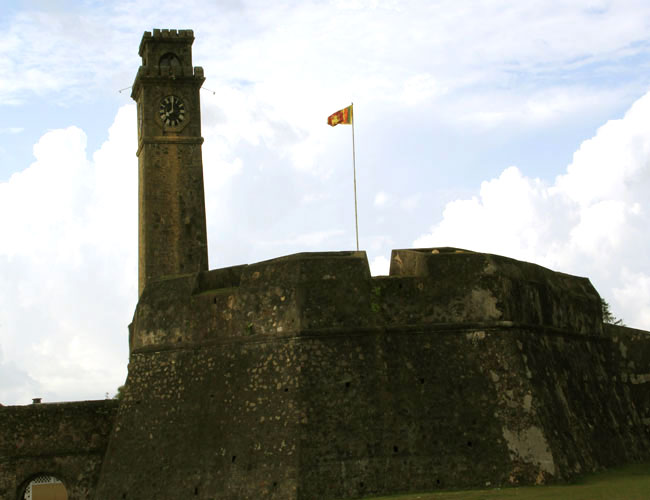
Built in 1588 by the Portuguese in a 52-ha area in the Bay of Galle on the southwest coast of Sri Lanka, and then extensively fortified by the Dutch during the 17th century, the fort of Galle is a monument of great historical, archaeological and architectural value. This is the largest and the most secured fortress in Sri Lanka which was declared a World Heritage Site by UNESCO in 1988. It had been declared an archaeological reserve by the United Nations since 1969.
The fort, being taken over by the Dutch in 1640 had extensive fortification because of which a bastioned stone wall was added to the fort in order to render it impregnable against the English, French, Danish, Spanish and Portuguese fleets who vied with the Dutch for the supremacy of the sea. During 1660s, the northern fortified gate and most of the curtain walls were built.
It is during the 18th century that the fort of Galle had much of its development. Private houses, public administration buildings, business establishments and warehouses were located within the fort during this century.
However, in 1796, the fort of Galle was handed over to the English after they took over Colombo. Since then Galle remained the administrative centre of the south of Ceylon and many inappropriate modifications were done affecting the historical and architectural value of the fort.
Galle Lighthouse

Another attraction in the historic city of Galle, the Lighthouse is a landmark erection rising above the Fort of Galle. This is Sri Lanka's oldest as well as most visited beacon dating back to 1848, but the original lighthouse was destroyed by fire in 1934. Therefore, the currently existing beacon that stands 18m tall was erected in 1938. The beacon that lies within the ramparts is really a breathtaking view.
National Maritime Archaeology Museum
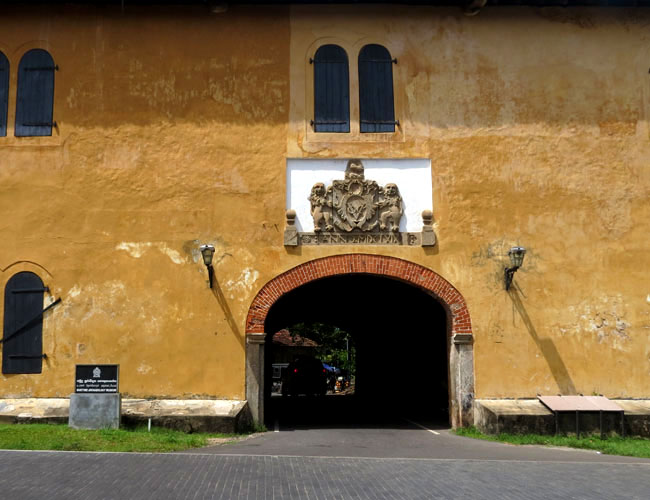
Located at the Old Dutch Warehouse in the fort of Galle, National Maritime Archaeology Museum displays exhibits of marine artifacts discovered in explorations made in the ocean floor around Sri Lanka.
The marine artifacts consist of maps, naval craft and a host of articles including artillery guns, ropes, earthenware, beer mugs, smoking pipes, barrels, shoes used by the sailors, and items recovered from the wreckages of ships sunk in the sea off the Southern coast nearly 800 years ago.
The previous maritime museum in Galle was completely washed away by the 2004 Asian Tsunami and the present museum is established in a renovated massive old building constructed during the Dutch Era located within the historic rampart of Galle.
Historical Mansion Museum
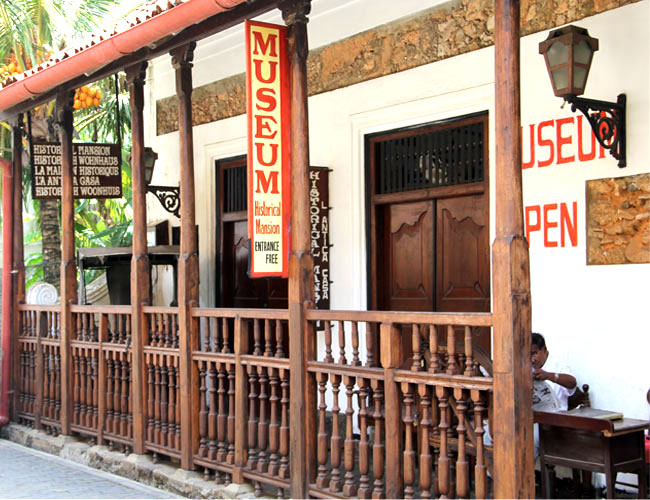
Located at the Old Dutch Warehouse in the fort of Galle, National Maritime Archaeology Museum displays exhibits of marine artifacts discovered in explorations made in the ocean floor around Sri Lanka.
The marine artifacts consist of maps, naval craft and a host of articles including artillery guns, ropes, earthenware, beer mugs, smoking pipes, barrels, shoes used by the sailors, and items recovered from the wreckages of ships sunk in the sea off the Southern coast nearly 800 years ago.
The previous maritime museum in Galle was completely washed away by the 2004 Asian Tsunami and the present museum is established in a renovated massive old building constructed during the Dutch Era located within the historic rampart of Galle.
Another museum lying within the Fort of Galle, Historical Mansion Museum is a privately-owned museum where miscellaneous artifacts are showcased. (The museum is open from 0900hrs-1700hrs/entrance free)
Port of Galle
The Port of Galle is a centuries-old historic port in Sri Lanka. History of Galle dates back to 14th century; it was the ancient seaport of Tarshish and King Solomon used it draw valuables like elephants, peacocks, gemstones. Persians, Arabs, Greeks, Romans, Malays, Indians and Chinese have also used Galle seaport for their business activities during the 14th century. The Galle seaport has played a pivotal role in exportation of spices specially cinnamon from Sri Lanka in early 1400 BC. Portuguese navigators arrived in Galle Port in 1505 with Lourenco de Almeida and the Dutch arrived in Galle in 1640.
The Galle Port provides facilities for pleasure yachts and it is the only port that provides such a service in Sri Lanka. The Galle Port has been recognized by the International Yacht Society as one of the world's best attractions.
A development plan has been proposed to provide a fully-fledged Yacht Marina for the Galle Port to facilitate the calling yachts as well as to attract more yachts. This proposed development of the Port of Galle as a tourist destination will act as a catalyst to economic growth of Southern Region of Sri Lanka. At the next stage, berthing facilities will be for passenger cruise ships (Phase II). The yacht lifting facility & yacht repair workshop will be provided.
Dutch Reformed Church
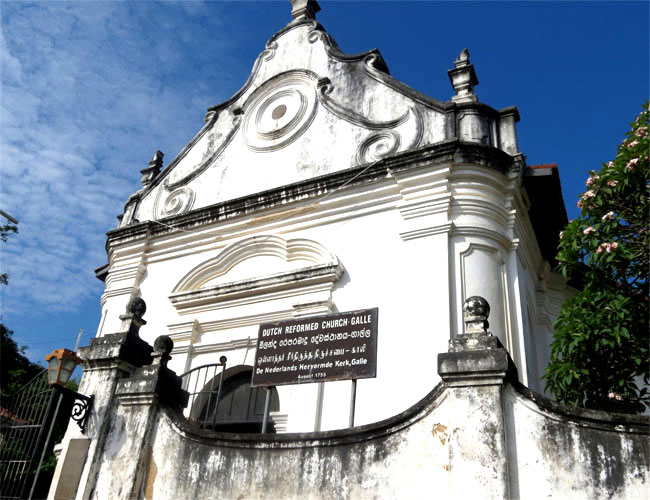
This church was built in 1640 and re-modeled between 1752 and 1755. The church is paved with grave stones from the old Dutch cemetery. In the church is an old organ of 1760 vintage.
Galle International Cricket Stadium
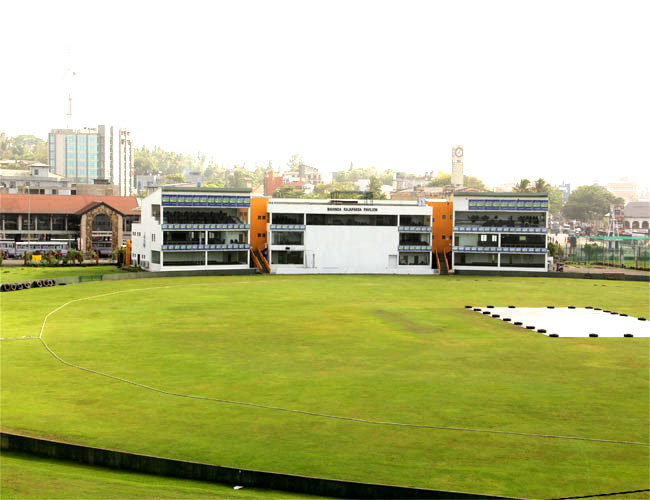
Located next to the colossal Dutch Fortress and the Indian blue ocean seen either side, the international cricket stadium of Galle is considered one of the most picturesque stadiums in the world. It was at this stadium that Australian cricketer Shane Warne to his 500th Test wicket.
Hiyare Reservoir Biodiversity Park/Sanctuary
The Biodiversity Park lies in the area around the Hiyare Reservoir that was built about a century ago to provide water to the Galle Municipal area. The 600-acre Biodiversity Park that mostly consists of rainforest patches is gifted with a wealth of flora and fauna. The Park was developed by the Galle Municipal Council in collaboration with the Galle Wildlife Protection Society. "Biodiversity Conservation Effort" at Hiyare is a project carried out in collaboration with the Wildlife Conservation Society of Galle, the Municipal Council of Galle and Nations Trust Bank. The project consists of a series of conservation activities centric to the Hiyare rainforest.
(Open daily 0830hrs-1700hrs)
Kottawa Arboretum
Located on the Galle- Hiniduma Road, 16 km northeast of Galle, Kottawa Arboretum is an evergreen forest reserve of the lowland wet zone. The 35-acre arboretum is home to more than 170 species of trees, about 70 species of avifauna and a variety of reptiles, butterflies, snakes, lizards, arboreal animals etc. The forest reserve is a great place for those who are interested in wet evergreen forest vegetation.
(Open daily 0830hrs-1700hrs/Entrance @ $ per adult, $ per child).
NEARBY ATTRACTIONS
North of Galle
Telwatte Bird Sanctuary
Declared as a national reserve in 1938, Telwatte Bird Sanctuary is a small lakeside bird sanctuary where waterfowls & shore-birds can mostly be spotted. In addition, the 1450-hectare sanctuary is home for endemic species, including trees, insects, amphibians, reptiles, and mammals. The sanctuary is located just inland at Telwatte 25 km north of the Galle city.
Seenigama Devale
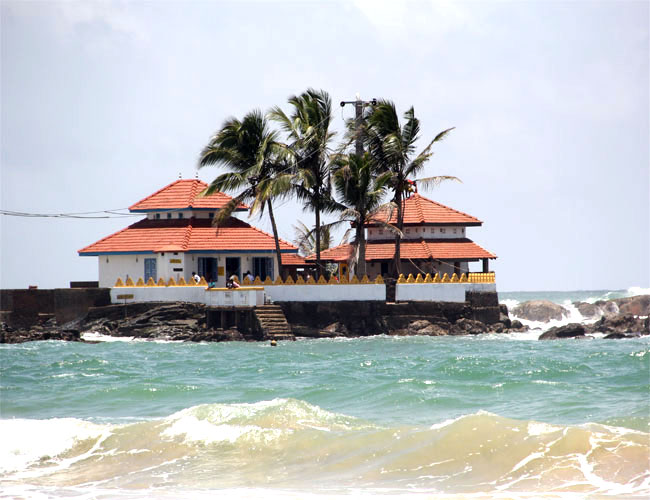
An ancient Devale (shrine) dedicated to the Devol Deiyo, or God Devol, Seenigama Devale is located in an islet in the sea of Seenigama, a small village on the south-west coast close to Hikkaduwa. Usually victims of theft throng the Devale seeking retribution.
Tsunami Photo Museum

A glimpse at melancholy memories of the 2004 Asian tsunami catastrophe can be had at the Tsunami Photo Museum at Telwatte featuring a nice collection of photographs and newspaper features of the calamity. It was also at Telwatte that a commuter train was hit by tsunami claiming over 1200 lives of passengers.
(Open daily from 0900hrs-1700hrs/entrance by donation)
Hiniduma Calvary
` Located 45 km north of Galle, Mount Calvary at Hiniduma represents a series of scenes (sculptured) connected with the crucifixion of Christ.
Madu Ganga Lake- Balapitiya
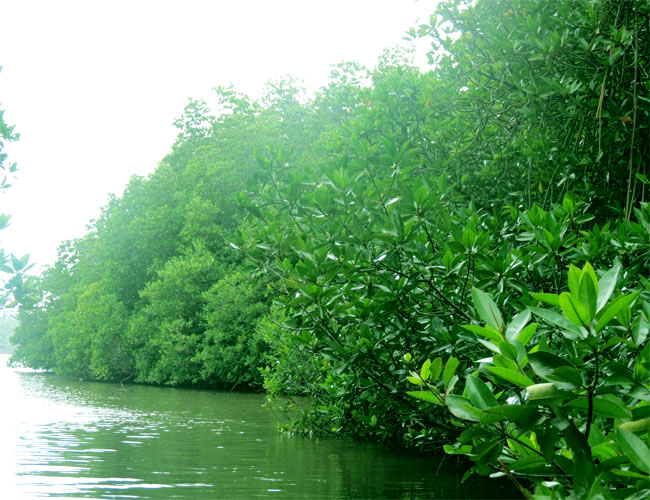
Madu Ganga Lake is lying at Balapitiya, a coastal town 38 km north of Galle. This beautiful lake with its surrounding area has been developed as a tourist zone which is a popular attraction in the south Sri Lanka. Madu Ganga wetland, estuary and mangrove islets make a complex coastal wetland ecosystem. The lake is of high ecological, biological and aesthetic significance being home to over 300 species of plants and over 250 species of vertebrate animals. This might be one of the pristine mangrove forests in Sri Lanka. Tourist hotels in the area offer boat rides, rowing facilities etc. When travel in the south Sri Lanka, Madu Ganga Lake is worth-visiting.
Kosgoda
Kosgoda is yet another attraction in the south of the island. Lying 45 km north of Galle, Kosgoda promises a gorgeous palm-fringed beach, a lagoon and a turtle hatchery. You could have boat rides across the lagoon and watch birds occurring around.
Kanneliya Forest Reserve
6,114 hectares in extent located close to Udugama, 36 km north of Galle, Kanneliya is a large rainforest popular as a bird sanctuary. Covered mostly with secondary forest, but rich in biodiversity, Kanneliya is a rich habitat for many bird species.
In this protected forest reserve are wide paths for a distance of about 2 km to walk and watch birds. A number of endemic bird species like Sri Lankan jungle & spur fowl, Ceylon grey hornbill, yellow-fronted barbet, green-billed coucal, chestnut-backed owlet etc., can be spotted when walking through the Kanneliya forest. Basic accommodation is available for overnight stay, but booking has to be made at the head office of the Forest Department.
(Open daily 0830hrs-1800hrs
Dooli Falls- Neluwa
Located 68 km north of Galle, Dooli Falls or Dooli Ella (Falls of Dust) is a beautiful waterfall. The 200-foot waterfall lies in the western edge of the famous Sinharaja rainforest.
Sinharaja Rainforest- a UNESCO World Heritage Site
Located in the southwest lowland wet zone of Sri Lanka, 95 km northeast of Galle, Sinharaja Rainforest is Sri Lanka's only tropical rainforest reserve and it is a biodiversity hotspot of international significance and has been declared a Biosphere Reserve and a World Heritage Site by UNESCO. More than 60% of the trees are endemic and many of them are considered rare. There is much endemic wildlife, especially birds, but the reserve is also home to over 50% of Sri Lanka's endemic species of mammals and butterflies, as well as many kinds of insects, reptiles and rare amphibians.
Southeast of Galle
Rumassala
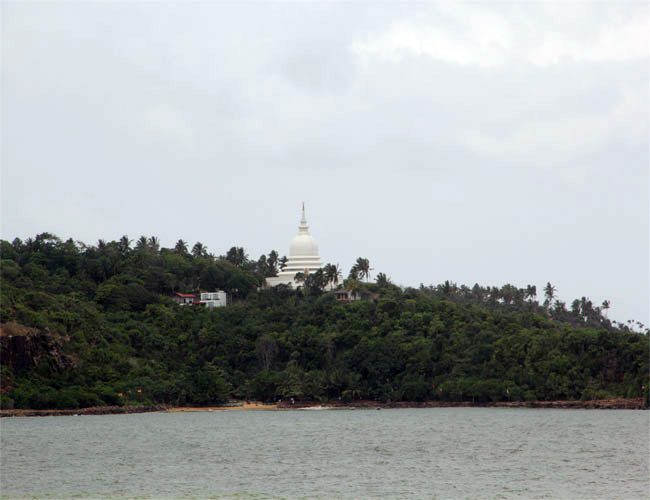
Rumassala is a forested mound located on the west end of the Unawatuna beach. Rich in biodiversity, Rumassala is home to a variety of flora and fauna. A variety of rare medicinal plants are found in the forest and according to Ramayana, Hanuman - the monkey god - dropped herbs here carried from Himalaya. A large dagoba (stupa) known as Japanese peace pagoda is seen atop the mound. A large statue of Hanuman is lying at the entrance to the temple which is on the promontory.
Talpe
A coastal township located 11 km south of Galle, Talpe is blessed with a palm-fringed tropical beach where you could engage in sunbathing, swimming, surfing and snorkeling.
Sea Turtle Hatchery- Habaraduwa

Sea turtle hatchery at Habaraduwa is an ideal place for nature lovers. This privately-owned hatchery that was established in 1986 in order to conserve this endangered species has so far released over 500,000 turtles to the ocean.
Kataluwa Purwarama Temple
Most famous for its fascinating paintings, the temple which is situated about 5 km east of Koggala, a town close to Galle and 16 km east of the Galle City, was built during the 13th century and some additions took place during the 19th century. These renowned Kandyan-style paintings found at the main shrine room provide evidence of the colonial influence of the time even on temple paintings. Most of the paintings have European figures and European style objects. Also Jataka tales or stories from the Buddha's lives have been painted.
However, these paintings seem to be fading away at present. Copies of paintings from this temple are displayed at the Maritime Archaeology Museum, Galle.
Stilt Fishing- Ahangama
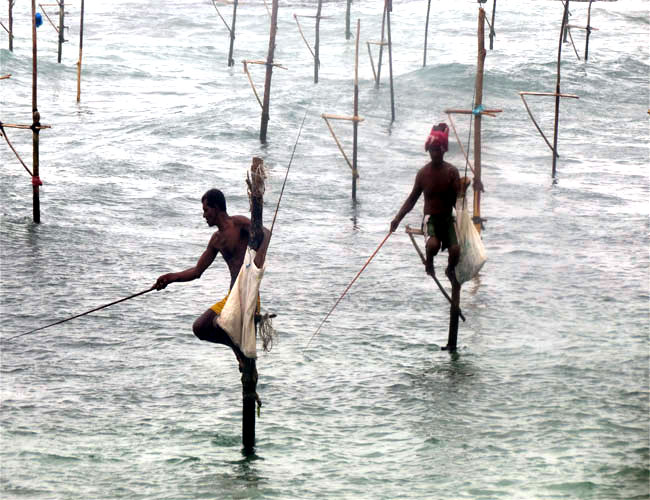
Stilt fishing at Ahangama is a unique attraction in Sri Lanka. Fishermen can be seen fishing perched on poles firmly embedded in the sea bottom. This form of fishing has been in existence from time immemorial and practised only in this area.
Surfing at Ahangama and Midigama

Ahangama is about 20 km south of Galle and further into south is Midigama. Both blessed with gorgeous beaches are known for surfing. Hotels in area around offer accommodation, food and surfing facilities.

